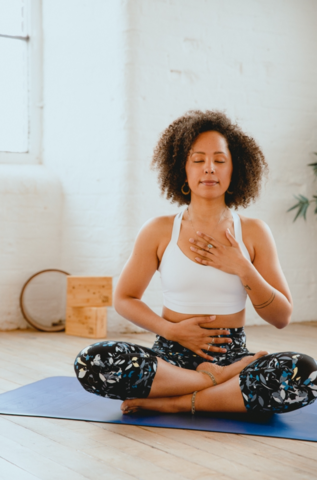If you’re a regular yogi, then you may have thought about trying Pilates. Yoga and Pilates are both low-impact exercises which are perfect for anyone looking to get their bodies moving.
Both of these practices cater to everyone, all the way from beginners to the more advanced. Also, you can typically perform these exercises with minimal noise or fuss, as they usually require minor amounts of equipment, ideal for those working from home.
Speaking of equipment, you can use your yoga mat for both meditation and exercise, but can you use it for Pilates? In this blog post, we will be where Pilates originated from, how different it is from yoga and what requirements your mat may need if you’re thinking about giving it a go.
Pilates: A Brief Introduction
Pilates is a lot younger than yoga, only being developed in the early 20th century by Joseph Pilates (yes, he named the practise after himself!)
In short, Pilates is a form of low-impact exercise which aims to strengthen the muscles while improving your natural alignment. It can also enhance your flexibility and usually, these workouts last for around 45 minutes. Pilates quickly gained popularity in Western countries such as the UK, the United States, Australia and Canada.
How Different is Pilates from Yoga?
So, what exactly are the differences between Pilates and Yoga? Whilst Yoga and Pilates are similar in their practises, they are not the same exercise.
Yoga looks to deepen your meditation practise, using breathing techniques and focusing on connecting your mind and body. Yoga can also allow you to improve your flexibility within your joints gradually, making them more open and workable.
Pilates is slightly different. This low-impact exercise helps to relax your overly tensed muscles. If you have suffered from an injury in the past, Pilates allows you to focus on the part of your body and rebuild the strength in that specific area. As well as putting your body at ease, Pilates works to improve your posture and overall core strength.
What is the difference between Yoga Mats to a Pilates Mat?
As you can imagine, with Pilates and Yoga being two different practises, they usually entail slightly different mat types to support you best when exercising.
It’s very easy to mistake a Pilates mat for a yoga one and visa versa. They are commonly made out of the same materials.
Typically, Pilates mats are thicker and denser than the yoga mat. This is meant to support your body further as it provides more cushioning between you and the floor. Yoga mats are slightly thinner, this allows you to be closer to the ground and stabilize your posture.
Our Wild Paws mats are made larger, with dimensions of 180cm x 66cm, which is slightly longer than the average mat as it gives more room to play around and have fun with your yoga routine. These mats have the thickness and support for movement, however, we always recommend trying out new surfaces with ease first.
Which exercise is better for you?
Both Pilates and Yoga are a good whole body workout and should be incorporated into your weekly exercise routine. Before choosing which one would be best for you, you should try to figure out what you are looking for when it comes to moving your body.
For example, if you suffer from anxiety or depression, yoga could be a good choice. When practising yoga, you employ your breathing in different techniques which allows you to focus on bringing your body and mind together. By concentrating on how your breath is being used, you are sending very specific signals to the problem areas that may be holding stress, letting these groups of muscles relax.
However, if you have back issues, then some yoga poses may worsen these. If you are still set on attending yoga classes, you can work around these poses and find ones that suit you better. Although, with Pilates and it's set of exercises, it can help you strengthen these injured muscles and aid you in re-engaging your body's core.
If you’re looking to improve your flexibility, then yoga is the better option. The yoga poses will stretch your muscles and increase your overall range of motion. If you keep attending classes regularly (or practising at home), these will dramatically improve your flexibility.
Pilates also increases flexibility, however the main focus is on relaxing tense muscles. If you find yourself with a clenched jaw often or painful shoulder muscles, Pilates will help you unwind those parts of your body and feel more loose.
Finally, both yoga and Pilates are focused on toning as the practises utilise muscles from all over the body. Pilates has the ability to not only use your body weight but also external resistance to build muscle definition. Yoga will use your own body weight to challenge you further whilst on the mat.


Leave a comment